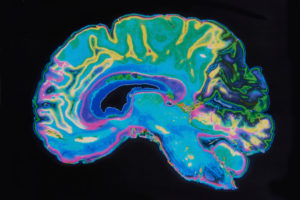 Traumatic brain injury, concussions, and chronic traumatic encephalopathy (CTE) have been regular topics in the news, sports, and entertainment.
Traumatic brain injury, concussions, and chronic traumatic encephalopathy (CTE) have been regular topics in the news, sports, and entertainment.
Public awareness of these injuries is at an all time high thanks to movies like Concussion and as a result of the recent NFL settlements with former players. Even with this heightened public awareness, many people do not have a clear understanding of what constitutes a traumatic brain injury. Below, we dispel four myths about minor traumatic brain injuries:
Traumatic Brain Injury Myth 1: You did not suffer a traumatic brain injury if you did not lose consciousness.
Fact: Traumatic brain injuries, concussions and even CTE can occur after a head injury even if the victim never lost consciousness. Although someone who loses consciousness after a head injury is more likely to have suffered a traumatic brain injury, even those who do not lose consciousness may suffer serious and life-altering consequences of traumatic brain injury.
Traumatic Brain Injury Myth 2: Traumatic brain injuries always result in a decrease in intellect.
Fact: There are many different symptoms that can occur with a traumatic brain injury and a decrease in intellectual ability is only one of them. The symptoms of a traumatic brain injury depend on what part of the brain was injured. It is possible for a victim to maintain his or her I.Q. after a brain injury, but have struggles with work or school due to symptoms such as chronic headaches, dizziness, light sensitivity, sound sensitivity, depression, or short term memory loss. Other symptoms can include changes in the sense of smell or taste, visual disturbances, language difficulties, seizures, sleep disturbances or loss of coordination or spatial awareness. Some victims (or their loved ones) report changes in mood, personality, or energy level. Some pre-existing conditions such as insomnia or depression can make recovery from a traumatic brain injury more difficult. An experienced brain injury lawyer can help you locate qualified medical professionals to diagnose and treat these injuries.
Traumatic Brain Injury Myth 3: Traumatic brain injuries only occur when something strikes the head.
Fact: Traumatic brain injuries can occur when the brain suddenly moves within the skull due to rotational forces or sudden motion. The inside of the skull has bumps and ridges that can cause bruising or other damage to the brain if the head suddenly changes direction. For example, in an automobile accident, the victim may be sitting in a car that is moving at a speed of 70 m.p.h. If the vehicle hits a fixed object, the car and the driver will suddenly stop. This causes the brain to move forward or backwards in the skull. The brain can be injured as it moves within the skull even if the skull itself never strikes the steering wheel or another object. This type of force can cause a concussion or in severe cases, a subdural hematoma or subarachnoid hemorrhage (two types of brain bleed). Although a football player may suffer a traumatic brain injury as a result of helmet to helmet contact, it is also possible for a player to suffer a a traumatic brain injury by being suddenly slammed to the ground without hitting his head.
Traumatic Brain Injury Myth 4: If a concussion doesn’t resolve relatively quickly, the person claiming a brain injury is faking.
Fact: Everyone is different. Although the majority of concussions resolve within a matter of weeks or months, statistically we know that some victims will be plagued by brain injury symptoms for years or even the rest of their lives. The fact that the majority of concussions resolve does not mean that those that do not resolve are not real. If the brain injury is the result of someone else’s negligence, it is important to have a qualified brain injury lawyer who understands the situation and who will pull together a team of experts to prove the nature of the injury.
